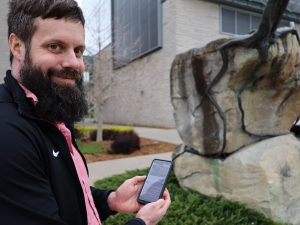What most determines whether or not someone pursues post-secondary education is the education of his or her parents, says a new Brock University brief.
“If a student’s family has no history of PSE (post-secondary education) he or she will be more likely to choose a non-university program, or not to pursue education at all after high school,” says Barriers to Post-Secondary Education Perspectives from Niagara.
It’s a cycle that’s particularly pronounced in Niagara, given the region’s connection to manufacturing, says the brief’s author, Kate Cassidy, who notes this is a “pivotal time” in Niagara’s history.
“As I spoke with different people during the research, many were saying, ‘We have a history connected to manufacturing; the grandfather went, the father went, but now they realize that that’s not something that the child can do,” says Cassidy. “They’re trying to figure out what role their kids can play, what kind of careers, and what kind of education, they should be pursuing.”
The brief, released March 4 by the Niagara Community Observatory, examines barriers to post-secondary education that Niagarans involved in the study say make post-secondary less accessible for them.
These barriers they perceive include:
• lack of clarity about career options and uncertainty about the job market;
• selection of “applied” rather than “academic” courses in early high school;
• lack of understanding the difference between post-secondary options and “intimidating” application processes;
• many students’ feelings of not belonging within formal education;
• uncertainty surrounding the benefits versus the costs of attending post-secondary.
The situation is worrying, given that in Niagara, only 18 per cent of adults aged 25 to 64 has a university degree — well below the provincial average of 29 per cent, says the brief. And 41 per cent of that same Niagara age group has no post-secondary education at all, compared to 35 per cent for all of Ontario.
The brief makes recommendations on how to increase accessibility to post-secondary education for those in Niagara and beyond.
“Parents and family members are very influential in the choices that students make in terms of the courses that they’re going to take,” says Lee Ann Forsyth-Sells, superintendent of education at the Niagara Catholic District School Board.
“We have learned that students start making decisions very early on in education,” she says.
Forsyth-Sells explains that her board offers a number of programs such as “career cruising” and information nights where grades 7 to 9 students and their parents learn about courses that will set the groundwork for post-secondary education and careers. Some of these include specialist high-skills major and dual credit/connecting to college courses, she says.
Through its Community Learning and Youth University initiative, Brock University offers a wide range of programs for some 6,000 children and their families during the year and on holidays that exposes them to university life.
Some of these programs include short courses on robotics, stop motion video, video game design, leadership and arts, says Cassidy, who is director of Brock’s Community Learning and Youth University.
“If kids see their parents learning, it shows them learning is valued,” she says. The initiative also has leadership, science, and technology-based programs with local schools.
At the wider Niagara level, the Greater Niagara Chamber of Commerce has created a series of five videos to inform Grade 7 students of up-and-coming Niagara careers and how to prepare for those careers through programs at institutions such as Niagara College and Brock University.
The videos focus on careers in digital media, advanced manufacturing, bioscience, “clean and green” technology, and entrepreneurship.
The videos are part of the two-year “Job Route” program funded by the Ontario Trillium Foundation. Its partners include the District School Board of Niagara and the Niagara Catholic District School Board.










